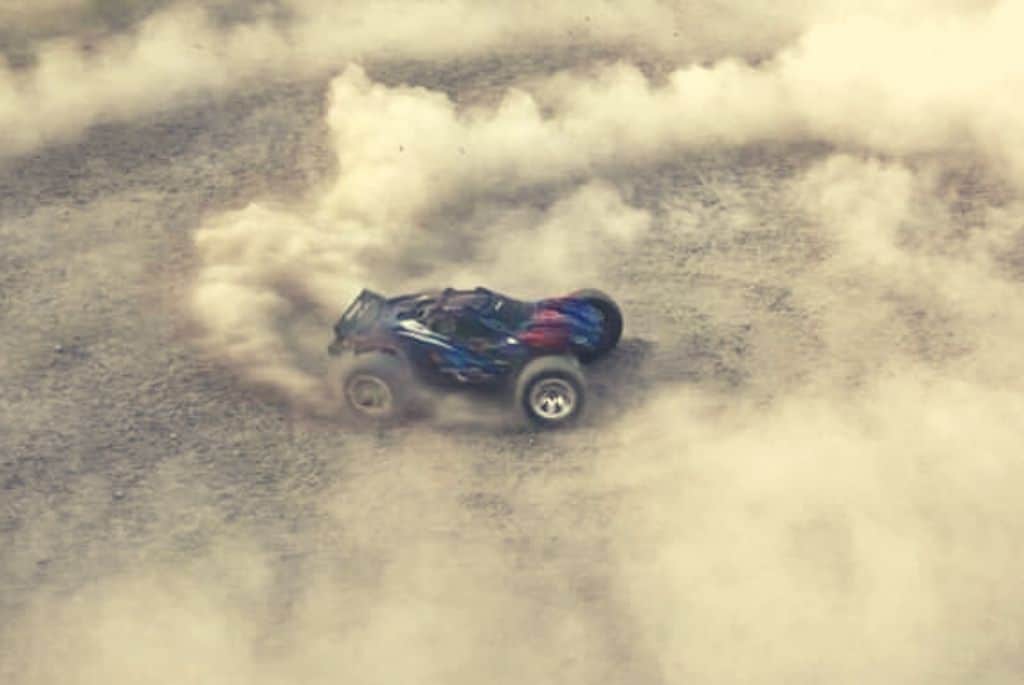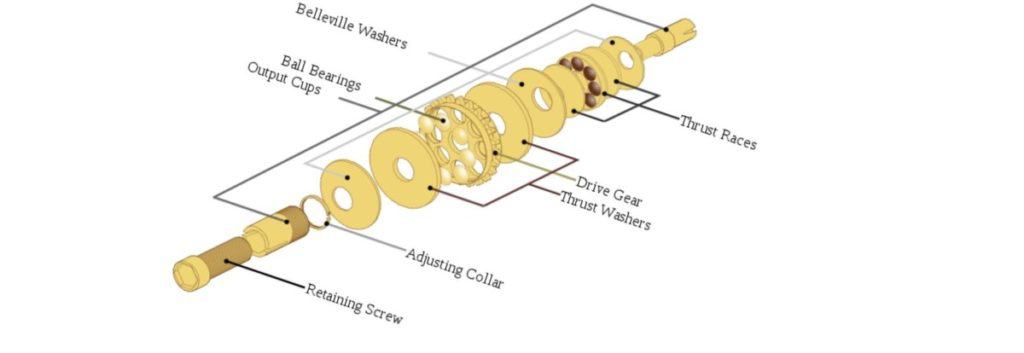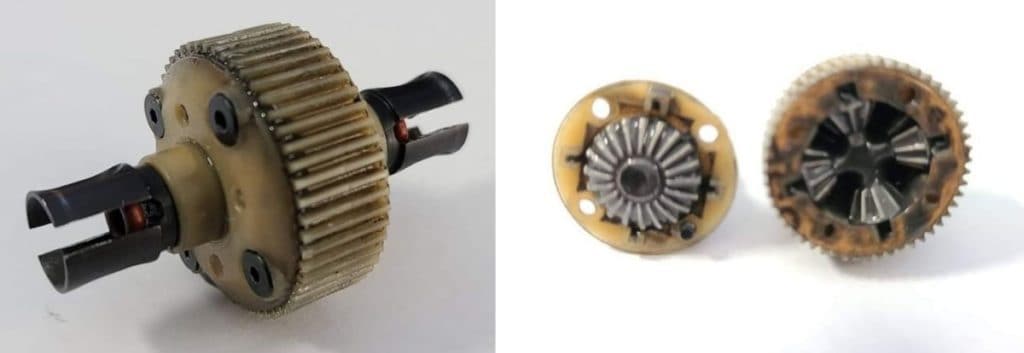
Youv’e been anxiously waiting for some parts to arrive so you can fix your RC car. They have finally arrived, youv’e put the new parts on, gone for a drive and found your RC’s wheels spinning in opposite directions.
A 2WD RC car when held in the air, is normal for the wheels to spin in opposite directions when rotated by hand. If the issue has only just happened, open up the differential and check for stripped gears and if any oil has escaped. A 4WD RC car with the front wheels spinning in the opposite direction to the rear wheels when the throttle is pressed is because a differential has been installed upside down.
In this hobby, we are forever upgrading and replacing parts so its essential to know what each part is and what it does.
In this article we will focus on differentials.
If youv’e had this problem or had a similar issue, keep reading below to get a better understanding.
(Links to Amazon)
What Are Differentials?
Almost every RC car has at least one differential and in most cases two to three in a 4WD car.
A differential or “Diff” is a mechanism that gives power to wheels even when traveling at different speeds so when one wheel is going slower the differential will allow the other wheel to compensate in acceleration.
If the car is driving in a straight line, all the wheels are travelling at the same speed but as soon as we start to turn around a corner the outer front wheel has to travel further than the inner front wheel so the differential allows more acceleration to the outer wheel than the inner wheel. This also applies to the rear wheels as the outer rear has to travel slightly further than the inner rear wheel when turning.
There are two main types of differential; Ball differential and gear differential.
Ball Differentials

Ball differentials are, as they are so adequately named, various balls, normally around 2mm in diameter, sitting in holes on the outside edge of a drive gear.
On either side of the drive gear there are silver rings known as thrust washers, they are pulled against the bearings of the drive gear by bellville washers.
On one side of the drive gear is a collar. This allows for adjustment in the amount of slip by the differential. On the other side of the drive gear, there’s a thrust bearing that prevents the differential from loosening the retaining screw that holds the output cups that hold the differential to the axle, on to the differential.
Movement of the differential is achieved by the thrust washers spinning with the ball bearings. The force of the differential can be adjusted by the retaining screw.
Ball differentials have to be slowly broken in, be careful when adjusting, if set too tight there isn’t much differential action and the bearings can be crushed. If set loose there can be some slip action.
Ball differentials require a lot of maintenance for them to keep working to their full potential. You will find yourself taking them apart and rebuilding on a constant basis.
The good thing with Ball Diffs is their smoothness. As a Ball Diff has no gears with teeth, it can transfer power to wheels very smoothly.
Ball diffs can’t handle as much power as gear diffs, they are used mostly on smaller scale models.
Ball Diff or Slipper Clutch? Which is the Problem?
If you find your RC isn’t accelerating the way it should and your RC is making a funny noise, it’s usually down to the ball diff or slipper clutch being loose.
You have a problem with your ball diff if your cars making a nasty screeching sound. You should be able to fix this by turning the adjustment screw in the outdrive.
If your acceleration feels wrong but the sound feels smoother, it’ probably a loose slipper clutch.
Take off the cover so you can see the adjustment nut. Press throttle until the motor spins the spur gear while holding the back wheels. By doing this you will know if the clutch is slipping if the adjustment nut isn’t turning.
Related post: Top 7 Reasons RC Car Steers But Won’t Move (& What To Do)
Keep the throttle pressed to the max and tighten the adjustment nut one turn at a time until it stops slipping.
Gear Differentials

Gear differentials are comprised of a spur gear and two outdrives. In the centre there are some small spider gears filled with silicone fluid that connect the outdrives together.
Gear diffs allow the outdrives to turn at different speeds so they provide the appropriate spin rate of each wheel so for example when turning the spin rate will go to the outer wheel as it has further distance to travel.
Gear diffs can handle a lot of power, they are used on 4wd and larger scale cars. Once assembled, they require hardly any maintenence.
Check out an enormous selection of differentials on Amazon by clicking here.
Gear diffs are easy to adjust. There are different types of silicone fluids that can be used. If you want the car to feel more nimble and smooth, choose a lighter fluid. By doing this you wont get as smooth of a feel as a ball differential, also you’ll find the car harder to control.
If you want more traction, go for a heavier fluid.
The down side is that you have to remove the gear diff from the car and open up the diff case to change the silicone fluid.
The following table shows the effects that differential fluid adjustments have when driving your RC car:
| Differential | Fluid Thickness | Characteristics |
|---|---|---|
| Rear | Thin | Increased cornering traction. Increases steering into corners. |
| Rear | Thick` | Less wheel spin. Decreases rear traction while cornering. |
| Center | Thin | Reduced over steer. Increased off power steering. Easier driving on rough surfaces. Front wheels unload more during acceleration. Diff will overload with powerful engines, power could be wasted. |
| Center | Thick | Improved acceleration. Less under steer. Better on smooth tracks. Better all wheel drive feel. Harder to drive with powerful engines. |
| Front | Thin | Increased steering into corners. Loss of forward traction and steering while accelerating out of corners. |
| Front | Thick | Improved stability into corners while braking. Increased on-power steering when exiting corner. |
Watch the following video for a better understanding of differential fluids. Watch from 7 mins 50 for a good recommended set up on most vehicles:
How to Change Diff Fluid and How Much to Use
You should replace your diff fluids every six months if you run your RC car on a regular basis, let’s say three times a week for a couple of hours per session.
Watch the following video. It shows how to change diff fluid and how much you should use:
How to Check if Your Gear Diff is Good
A simple way to check if your diffs are working ok is by holding the front wheels firmly in the air so they don’t move and trying to roll the rear wheels along the ground. Your rear diff is good if you can’t roll them. You can do the same process for your front diff by holding your rear wheels firmly in the air.
To check the centre diff is by holding the car on the ground pressing down on it and tapping throttle while listening for any weird noises.
If you buy a new RC car that’s prebuilt, I recommend taking the diffs apart and checking to see if there’s enough fluid in them.
Diffs sometimes come from the manufacturer with the incorrect amount of fluid, so you could have problems sooner than you think. It’s also a good idea to check the screws are done up tight so they don’t leak.
Similar Diff Related Problems
One wheel spins faster than the other in the air while pressing throttle.
Open up the diff and check for stripped gears. If the gears are ok, the difference in speed could be from a natural bias of the differential when using a thin fluid.
Only Three Wheels Spin when Throttle is Pressed off the Ground.
This may not necessarily be a problem with the differential. Before taking your diff apart, check axles, dogbones and drivepins are ok and correctly engaged. If a wheel is slipping on its axle or if an axle is binding, this could cause the diff to transfer power to the other side.
Another cause could be down to one of the wheels being clogged with dirt due to lack of maintenance.
Conclusion
After reading this article you should be able to identify any issues with your RC caused by differentials.
You know the differences between ball diffs and gear diffs and how to adjust them.
Checking your differentials should be part of a regular maintenance routine for your RC car.
I hope this article helped you in some way, if it did, please have a look at some of my other content as well.

